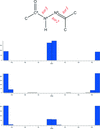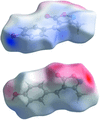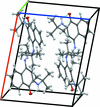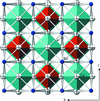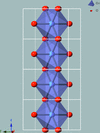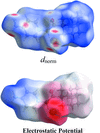issue contents
July 2018 issue

Cover illustration: This paper presents the synthesis and structure of M4Au12Ag32(p-MBA)30 bimetallic monolayer-protected clusters (MPCs), where M+ is an alkali metal counter-ion (M = Na, Cs) and p-MBA is p-mercaptobenzoic acid. By a combination of single-crystal X-ray diffraction and density-functional calculations, the structure was shown to consist of a 12 gold-atom icosahedron surrounded by a 20 silver-atom dodecahedron, forming a 32-atom excavated-dodecahedral bimetallic core capped by six equivalent Ag2(p-MBA)5 mount motifs. Comparisons with other family members have been carried out to examine the effects of heteroligands and heteroatoms on the structures of these species. See: Conn, Bhattarai, Atnagulov, Yoon, Landman & Bigioni [Acta Cryst. (2018). E74, 987–993].
research communications







































































 journal menu
journal menu


















